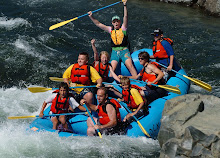2b Exploratorium
2. Contains the sources you used with links to these sources .25 points
-http://en.wikipedia.org/wiki/Exploratorium
-http://www.exploratorium.edu/
-http://family.go.com/travel/things-to-do/california/san-francisco/poi-282162-exploratorium/
3. Contains a brief paragraph how it connects to your study of humanities. 1 point
The Exploratorium is a very unique museum. If I needed to describe the Exploratorium in only a couple words, I would probably describe it as "hands on." It differs from most museums in the fact that it's extremely interactive. I believe that this museum is a very successful example of a teaching style that Freire advocated. Freire believed that students learn the most when they are "active learners" and aren't just having a bunch of information "pumped" into their minds. If there is anywhere where active learning is encouraged, it's the Exploratorium. I haven't been there since I was in elementary school, but I still remember much of the museum distinctly. If I had, on the other hand, simply gone to a normal museum, I probably wouldn't be able to recall what I had seen. The popularity of the Exploratorium proves what Freire asserted, that kids do well in a learning environment that is interactive and leaves room for creativity.
4. Contains the following "analytical elements":
a. Observation: What did you choose? What do you see or hear or feel or think of in the choice you made? What is the subject of the work? If you chose a 'thing' what is the work made of and what techniques (colors, lines, shapes, textures)does the creator use? Be specific in your description. If you chose a place, be specific in your description of what you see or hear. Talk to your reader as though they cannot see the item but somehow must draw a painting of what you see or hear. 1 point

Unlike most museums, the Exploratorium is not a relatively quiet place full of contemplative, calm people. Instead, it is a loud, bustling building full of energetic kids along with their teachers and/or parents. Everywhere you look, there are interactive exhibits with people crowded around them, intrigued and smiling. Most kids find conventional museums "boring," but almost every child can find at least one interactive exhibit at the Exploratorium that interests them. When you look into these children's eyes, it's almost as if you can see their brains spinning; it's apparent that the things they're doing and seeing will stick with them for a long time.
b. Interpretation: What is your choice about? Give specific examples to support this statement in 2 sentences; do so in a way that teaches us something about your choice. Make Paulo Freire proud! .75
The Exploratorium is about creativity, interaction, and making learning fun. Creativity and interaction are apparent by simply looking around inside the museum, kids everywhere are participating in hands-on experiments and letting their minds imagine and explore. It's also evident that they're having fun, which can be seen in the smiles on their faces and their excitement when telling people about the museum and how much they learned.
c. Judgment: What led you to your choice? What do you think or feel about this choice? Why do you feel this way? Support your thoughts with specific observations. .5
I chose the Exploratorium because I remember enjoying it so much as a child. To be honest, most museums don't excite me much. The way that most museums are set up, walking around looking at and reading things, simply doesn't hold my attention for very long. The Exploratorium is different though, it's fun, interesting and memorable, which is why I chose it.
d. Questioning: What else would you like to know about this choice? When completing the question section, lead your audience into the question by stating a fact you do know, yet you still have the related question. This way, both your audience and you will have an educational experience. Example: I learned that John Steinbeck's Grapes of Wrath was based on his personal experience working with farm workers. I would like to know if the characters he used in that book are fictitious or are they people he met? .5 point
While it is clear that kids enjoy spending time at the Exploratorium, I'm curious whether they actually learn more here than they do at a conventional museum with hands-off exhibits. Are the things that they remember just fun times and enjoyable activities, or do they actually get a grasp of science concepts and important information?
5. Using your classmates work from last week, tell us one thing you learned from 1 student. Is this one thing some common experience you share or some experience that is completely different than what you experienced? Is this one thing related to our class theoretical foundation and if so, how? Is that one thing related to historical or cultural context of this country or a different one? Link that persons blog to this entry (eg cut paste that blog entry here) . .5
I chose to respond to Nicolette's post about Yosemite (http://ichbinfreiburger.blogspot.com/2008/09/2a-yosemite.html). I learned quite a few different things from Nicolette's post, but one of the things that I found interesting was that the word Yosemite is supposedly derived from the Miwok word "yohhe'meti" which means "they are killers," referring to the violent native tribe that inhabited the region. Although I've done a lot of camping and outdoor activities, I've never had the privilege of going to Yosemite. The closest I've been was when I rafted the Merced river which is a little beyond the outskirts of Yosemite. Nicolette's descriptive explanation of Yosemite only made me want to go there more. Yosemite does relate to the foundation of this class, as she explained in her post when she discussed Yosemite's history. This beautiful national park led to the creation of many more parks and as Nicolette said "the national park has been the backdrop of various political and cultural changes to taking place in California."
